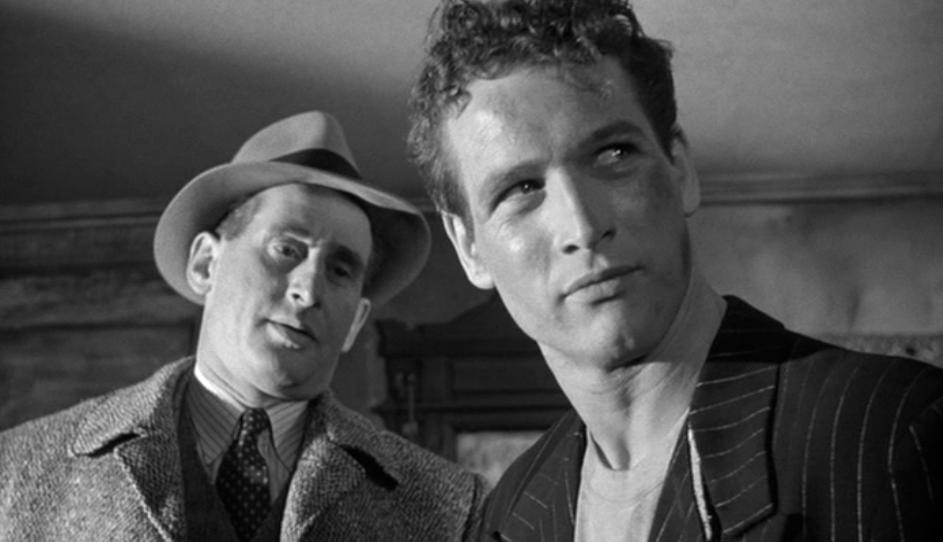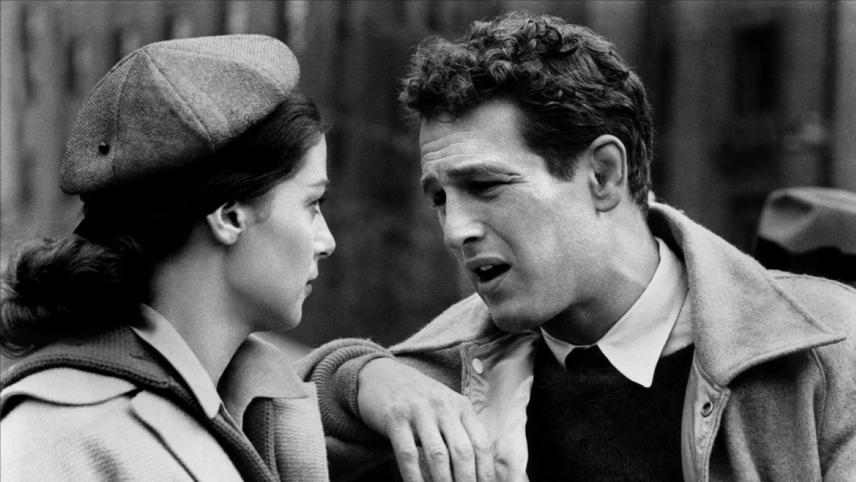Summary
Most notable for its legacy, this by-the-numbers biopic lays the foundations for future boxing movies without really ever quite living up to the films it inspired.
With it being fight month here at Ready Steady Cut what better time than to revisit an early version of the boxing movie, one of the first and arguably most influential of the genre? Somebody Up There Likes Me is the biopic of former world Middleweight Champion Rocky Graziano and is based largely on his autobiography. The story takes us from his childhood as a juvenile delinquent through to his eventually winning the world title.
Paul Newman (The Hustler, Cat on a Hot Tin Roof) stars as Graziano and gives an energetic performance quite distinct from much of his work. For a man whose screen persona was the epitome of cool and calm, even at times indifferent and detached, it is startling to see him play a hot-headed but fundamentally good-natured protagonist. Newman came to the role after the untimely death of James Dean who was originally attached to the project. The role effectively resurrected Newman’s career after an early false start in the disastrous The Silver Chalice. This film also features Steve McQueen in his first film role as a blink and you’ll miss it street punk.
It is interesting to view this through the lens of what the boxing movie has become. So much of the film’s DNA can be found in later boxing titles. The central character is a lovable delinquent who finds a direction because of boxing which is obviously reflected in the Rocky series. The relationship with his wife who gives him stability and accepts that she has married a fighter for good or bad also shows up in Rocky as well as Cinderella Man. The fight choreography is surprisingly ahead of its time and was a clear inspiration for both the fight sequences and the fight montages in Raging Bull (Martin Scorsese discusses this on the film’s DVD commentary). Although not Hollywood’s first attempt at the boxing movie (that honour belongs to Body and Soul) this lays down so many of the tropes that would become commonplace in similar, more recent films.

Despite the clear impact Somebody Up There Likes Me had there are a number of issues that cannot be ignored. The tone of the film is a little strange. The subject matter, especially in the early stages of the story, covers some pretty tough events; Graziano goes to juvenile prison and is such a problem as an offender that he is moved to an adult jail. He then goes AWOL from the army during World War Two. The film attempts to show us these things as serious events but we never really see Graziano as a threatening character which undercuts the drama. Much of the somewhat sanitised nature of the grittier elements of Graziano’s story can be explained by the fact that this was product of the late stages of the studio system and MGM as a studio, in particular, was having something of an identity crisis at the time, caught between the family-friendly fare that it had made its name with and more hard-hitting noir that other studios like Fox were producing. What we are left with is a slightly schizophrenic mix of social realism and upbeat optimism. The opening credits with a schmaltzy Perry Como song followed immediately by scenes of domestic violence are one example of the uncomfortable tonal shift on display.
Somebody Up There Likes Me is notable mainly for the template it lays down and the careers it launched. It also looks fantastic and picked up Oscars for cinematography and art direction. For those reasons alone it merits discussion alongside more high profile iterations of the boxing story. However as a stand-alone film, aside from the fight sequences and central performance the film doesn’t quite hold its own, the dialogue is clunky and the narrative is a bit too meandering to make this more than an average outing. Overall it just wins on points.



